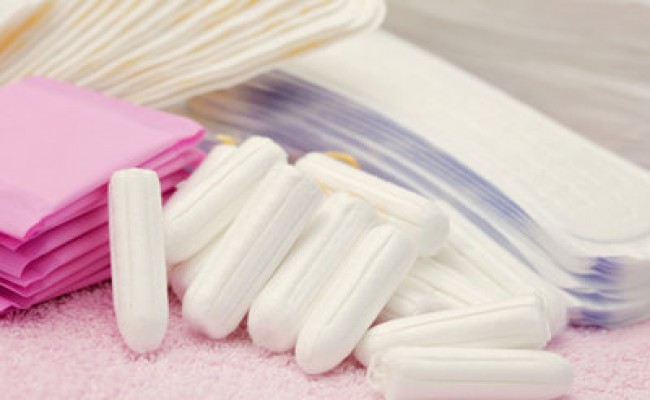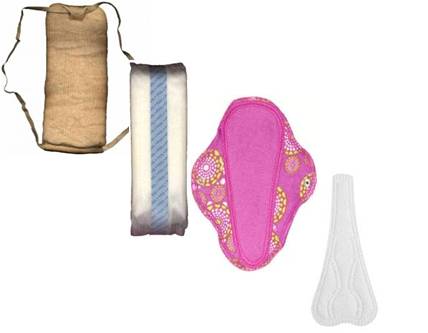Most women menstruate. However, most of the rest of the females do not bleed externally, as happens in humans.

So, why menstruate at all? And if it’s such a good idea, why don’t other animals do it?
Menstruation is part of a woman’s reproductive cycle. Each month, in response to reproductive hormones (mainly estrogen and progesterone), to woman’s uterus prepares for pregnancy.
The inner lining of the uterus, known as the endometrium, is prepared for an embryo to implant in it. The endometrium thickens, divides into different layers and develops an extensive network of blood vessels.
If the woman does not become pregnant, the progesterone levels begin to fall. The thick endometrial tissue with its blood vessels then begins to detach, and is discarded through the vagina.
On average, women lose 30 to 90 ml of fluid during 3-7 days of menstruation. At first glance, this seems a very wasteful process, and this is why many people have tried to explain why it happens.
The anthropologist Beverly Strassmann of the University of Michigan in Ann Arbor, United States, presented his own idea in 1996.
Strassmann argued that if we want to understand why menstruation occurs, we must find out why the uterus of animals go through reproductive cycles: not only humans, but also other mammals.
Other mammal females also build internal walls just like women. If they do not get pregnant, either reabsorb this material, or let it bleed.
It takes a lot of energy to keep a thick, full layer of capillaries inside the uterus all the time, Strassmann argued.
It may actually require less energy to discard the coating and grow it back. As Strassmann explained, “I used energy economics, not really explain the bleeding, but, first of all, to explain why this cyclic exists,” says Strassmann.
Then it is a question of whether the female can reabsorb all the blood. If there is too much, it may be easier to menstruate.
“The fact that there is blood loss in some species is not an adaptation, but a side effect of the anatomy and physiology of the species,” says Strassmann.
Colin Finn, then at the University of Liverpool in the United Kingdom, suggested something similar in 1998.
His idea was that menstruation is a necessary consequence of the way the uterus evolved, rather than a way to conserve energy as Strassmann had suggested.
According to Finn, over time the embryos have sunk deeper and deeper into the mother’s tissue, and the lining of the uterus has been defended against the embryo by thickening and layering.
This thick coating is perfectly receptive to the embryo, but only for a few days. After that, if the woman is not pregnant, the lining should be discarded.
Both ideas make a lot of sense. To find out the truth, we have to compare menstruating animals with those that do not.
Apart from humans, most other menstruating animals belong (as do humans) to the primate group. Most monkeys that live in Africa and Asia, like rhesus macaques, menstruate.
Great apes do it too. Menstrual bleeding is easily detectable in chimpanzees and gibbons. However, gorillas and orangutans bleed less copiously, so menstruation is only visible through closer inspection. Other primates, such as tarsiers, may menstruate, but there is no firm evidence.
Apart from our close relatives, menstruation also evolved independently in two other groups: some elephant bats and shrews.
It seems that the list of animals that menstruate is quite short: humans, apes, monkeys, bats and elephant shrews. What do these seemingly nonsense animals have in common?
You eat down to how much control the animal to be mother about her own belly, as Deena Emera from Yale University in New Haven, Connecticut, United States.
In an article published in 2011, Emera and her colleagues said that in menstruating animals, the transformation of the uterine wall is completely controlled by the mother, through the hormone progesterone.
Embryos can be implanted in the wall of the uterus if it is thick and has large specialized cells, which means that the female is in fact controlling whether she can get pregnant or not. This ability is called “spontaneous decidualization”.
In most other mammals, these changes in the uterus are triggered by the signals of the embryo. In effect, the lining of the matrix thickens in response to pregnancy.
“There is a good correlation between menstruating species and species that exhibit spontaneous decidualization,” says Emera.
Assuming this pattern is maintained, Emera seems to have identified the key question. Why do some females control their own matrix coatings, while others allow them to control their embryos that have not yet been born?
“We argue that spontaneous decidualization probably evolved due to the conflict between the mother and the foetus,” says Emera.
“We presented two possibilities, especially in primates.” The first is that spontaneous decidualization may have evolved to protect the mother from an aggressive foetus.
All the foetuses sink into their mothers’ womb in search of food. But some do this more than others.
In horses, cows and pigs, the embryo simply sits on the surface of the matrix lining. In dogs and cats, foetuses dig a little more.
But in humans and other primates, the foetus will dig through the entire lining of the womb to bathe directly in the blood of its mother.
The mother wants to ration the amount of nutrients she gives to each baby so that she can have the excess and be able to have more babies. On the other hand, the baby, who is in development, will want to get as much energy from his mother as he can.
The second possibility is that the spontaneous decidualization evolved to get rid of the bad embryos.
Human embryos are very prone to genetic abnormalities, which is why so many pregnancies fail in the first weeks. This may be due to our unusual sexual habits, says Emera.
“Humans can copulate at any time during the reproductive cycle, unlike many other mammals that copulate around ovulation,” he explains.
This is called “extended copulation.” The other menstruating primates, some of the bat species that also menstruate, and the elephant shrew, practice extended copulation.
As a result, an egg can have several days at the time it is fertilized, says Emera. The aging of the ovules can cause anomalies in the embryos.
Once the lining of the uterus has thickened and changed, your cells develop the ability to recognize and respond to defective embryos.
So spontaneous decidualization may be a way for the mother to save resources, says Emera.
“This prevents you from investing in a poor quality embryo, allowing you to get rid of it immediately and prepare your body for another successful pregnancy.”
Although we cannot be sure why, spontaneous decidualization evolved, we are closer to answering the enigma of menstruation.
The ideas of Strassmann, Finn and Emera suggest that human menstruation is accidental byproduct related to the evolution of our reproduction.
It could be a consequence of the aggressiveness of our foetuses, or of our mating habits, regardless of whether the women are ovulating, or both.
In the species that reproduces differently, menstruation was never encouraged to occur. In fact, menstruation itself used to be a rare event. In nature, and in some human societies, it remains so.
Among the Dogon, a society that does not use any form of contraception, in Mali, Strassmann you have found that women have about 100 periods throughout their lives. This was probably quite typical for a lot of the history of our species.
On the contrary, most modern women have between 300 and 500 periods. “What we are experiencing, as part of our evolution, is very unusual,” says Strassmann.
“There are women who are sometimes afraid of not having a period,” says Clancy. “I think that understanding the origins of how our body works helps us to realize that the limits of normality are much broader than we might think. . “














